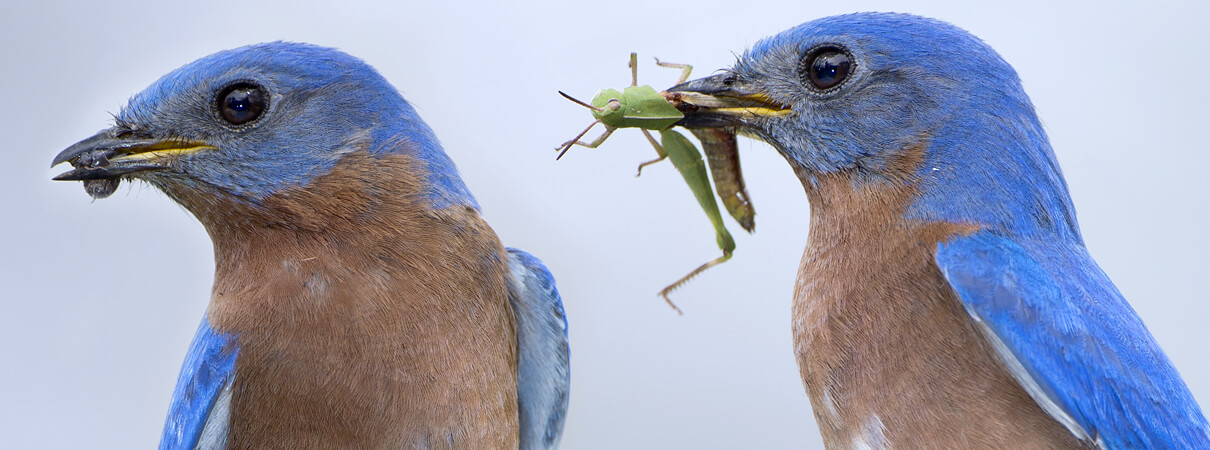Migratory Birds Are Worth Protecting: A Response to The Wall Street Journal
On February 16, The Wall Street Journal ran an editorial by staff writer, Allysia Finley: If You Kill a Migratory Duck, Your Goose May Be Cooked. In her editorial, Finley argues that the Migratory Bird Treaty Act (MBTA) no longer serves a purpose and should be done away with. We—American Bird Conservancy and the Cornell Lab of Ornithology—could not disagree more.

Eastern Bluebirds are among the many species of birds protected by the Migratory Bird Treaty Act that provide ecological services—such as pest control—that are worth billions in the U.S. economy. Photo by Bonnie Taylor Barry/Shutterstock
Contrary to what Ms. Finley would have us believe, federally protected migratory birds aren't a drag on the U.S. economy. In fact they contribute to it, providing essential ecological services—including pest control, pollination, and seed dispersal—worth billions to U.S. farmers and consumers. (See the recent book Why Birds Matter: Avian Ecological Function and Ecosystem Services, edited by Çagan H. Sekercioglu, Daniel G. Wenny, and Christopher J. Whelan and published by the University of Chicago Press.)
Migratory birds also drive ecotourism. Their presence attracts birders, photographers, and tourists, who stay, shop, dine, and buy gear. It is well documented that millions of American participate in these activities, and in so doing pump billions of dollars into local economies.

Birdwatchers and ecotourists inject billions of dollars into the economy every year. Photo by Ron Niebrugge/Alamy Stock Photo
Beyond their ecological and economic values, migratory birds constitute a fundamental part of our national heritage. Even with the protection offered by the MBTA, that heritage is currently at risk. As the State of North America's Birds 2016 report makes starkly clear, more than one-third of our migratory birds will require concerted conservation efforts to ensure their future. They are under extreme pressure from cumulative threats—not just poorly sited wind energy development but habitat loss, invasive species, window collisions, and pesticides. Taken together, these threats have created a dire situation for many species. Doing away with the MBTA would push them closer to the brink.

Barn Swallows are found on every continent of the world except Antarctica, and are often featured in literature, paintings, and other cultural works. Photo by KOO/Shutterstock
Killing the MBTA would also put the United States in violation of a bedrock international treaty with Canada and Mexico. For a hundred years, these three countries have jointly recognized the critical importance of migratory birds and the necessity of conserving them, and have worked together to make sure that migratory species—a public trust resource—are protected for current and future generations.

Like many of the birds protected by the Migratory Bird Treaty Act, the Baltimore Oriole is not listed as threatened or endangered under the Endangered Species Act, and thus receives no protections from the ESA. Photo by Mike Truchon/Shutterstock
Ms. Finley suggests that the Endangered Species Act (ESA) would do a better job of protecting birds than the MBTA now does. That argument is simply false. The point of the MBTA is to protect the species that are not yet at the critical stages addressed by the ESA. Moreover, some members of the current Congress have made clear their desire to water down or do away with the ESA altogether.
Now is not the time to weaken or abolish either of these essential conservation tools, both of which have proven extremely successful at conserving the bird populations of North America for future generations to appreciate.
Sincerely,
George Fenwick, President, American Bird Conservancy
John W. Fitzpatrick, Director, Cornell Lab of Ornithology


















































